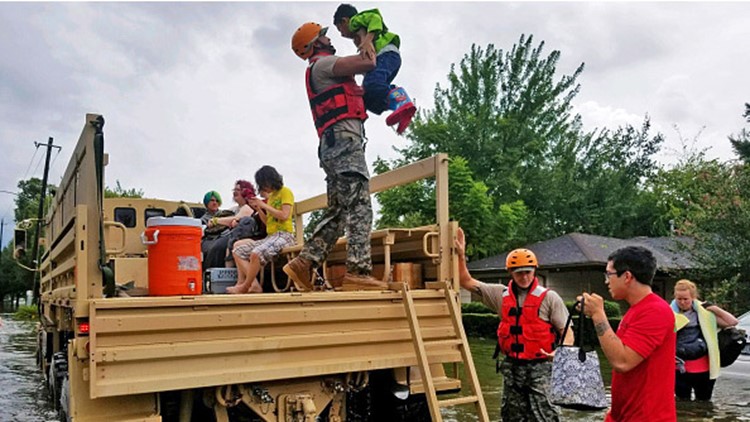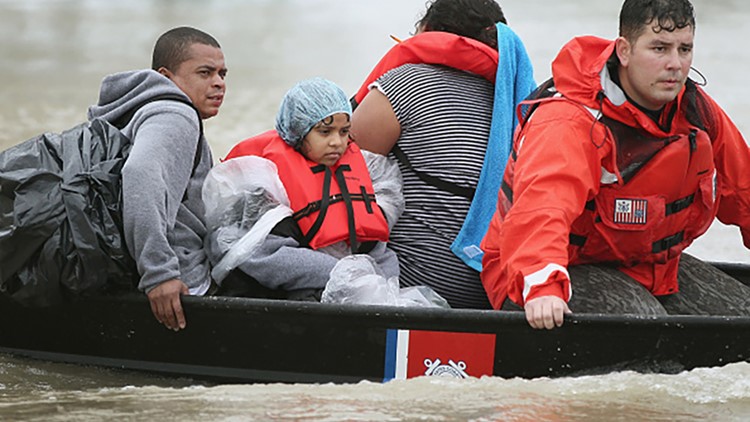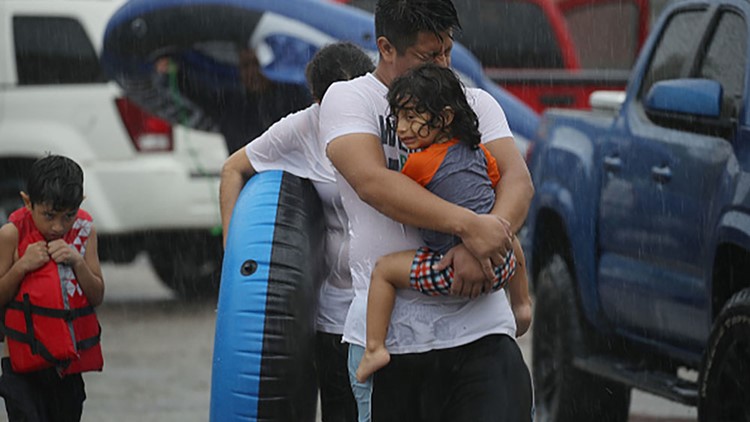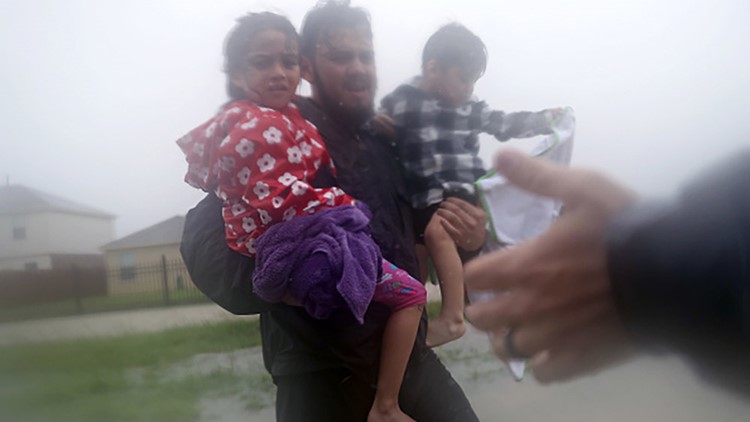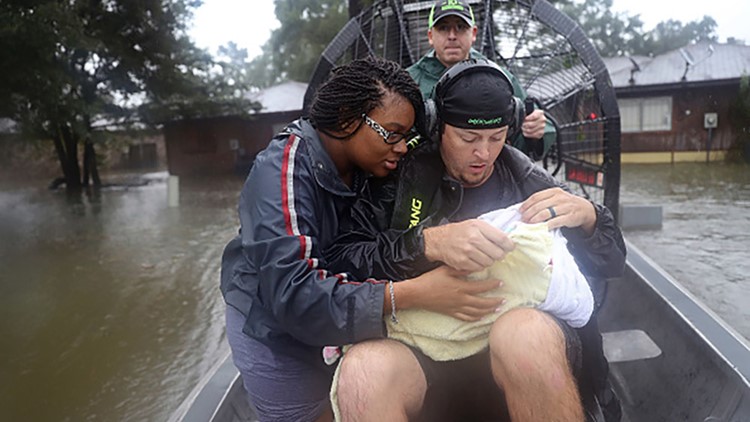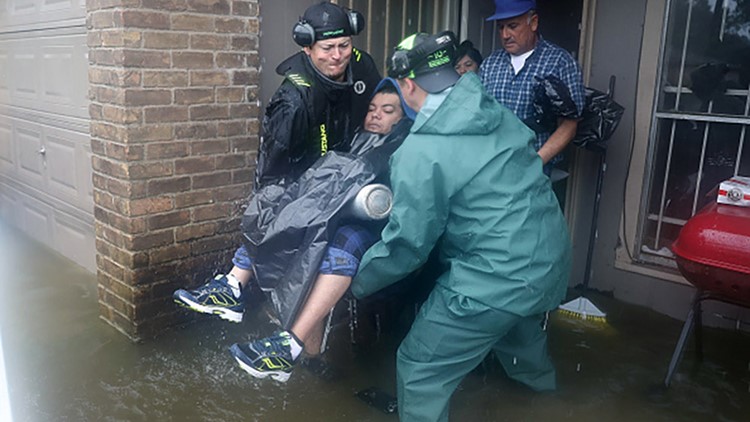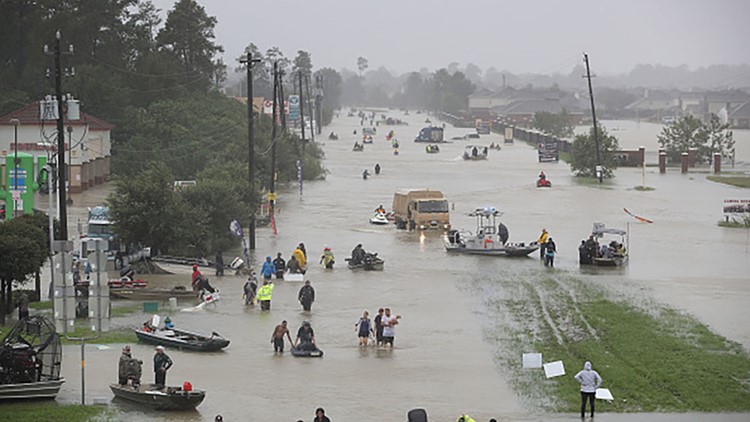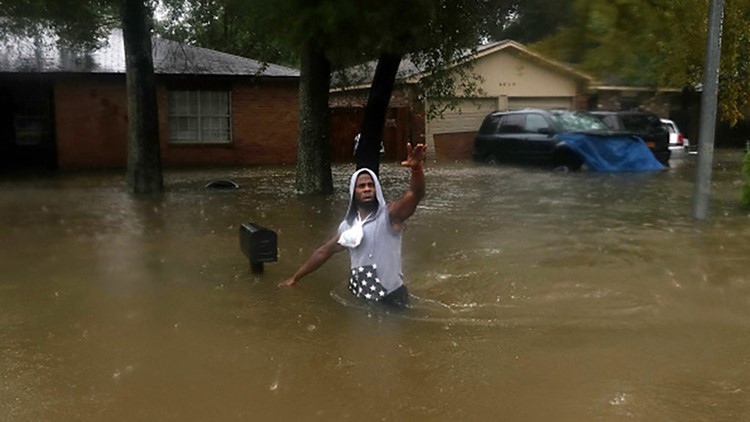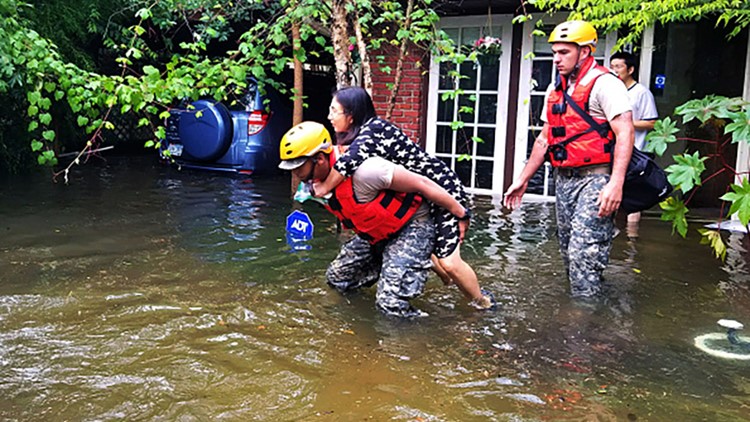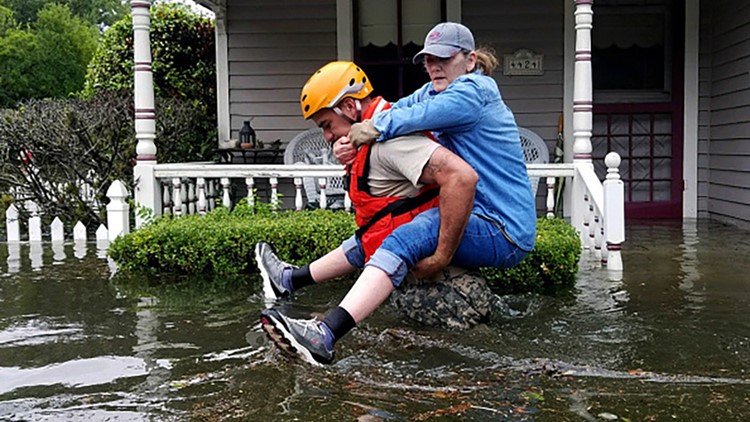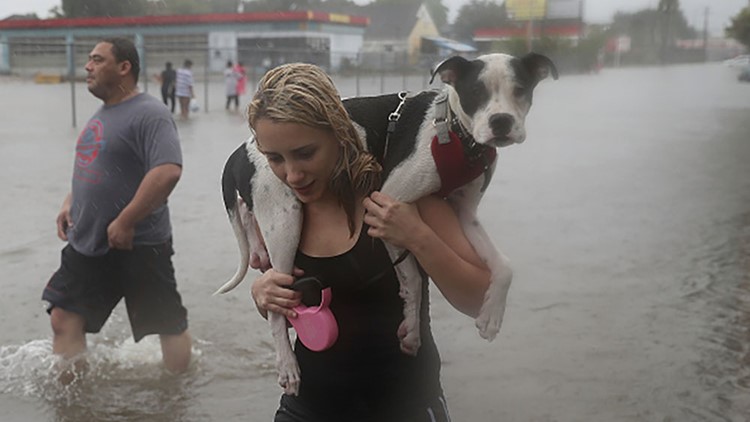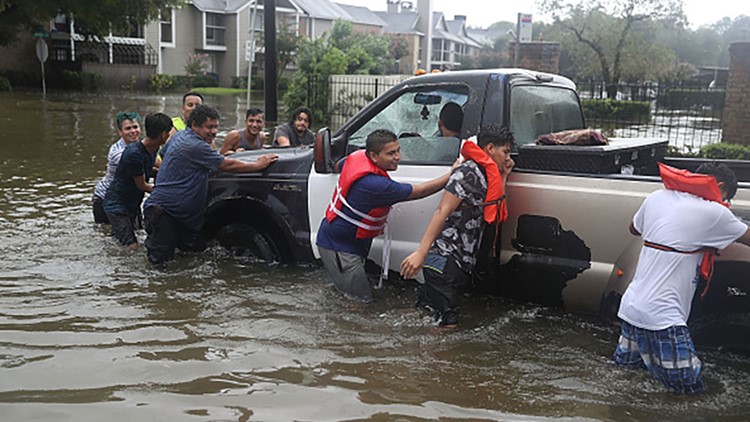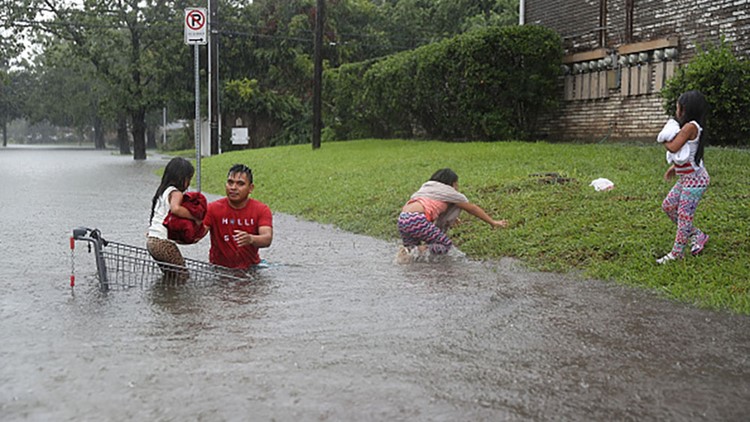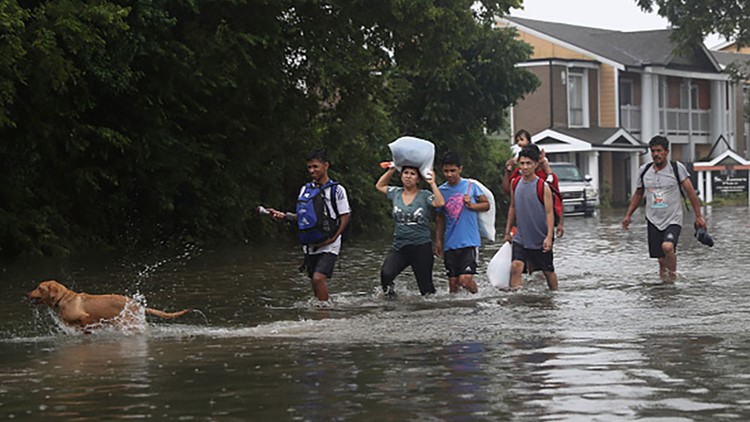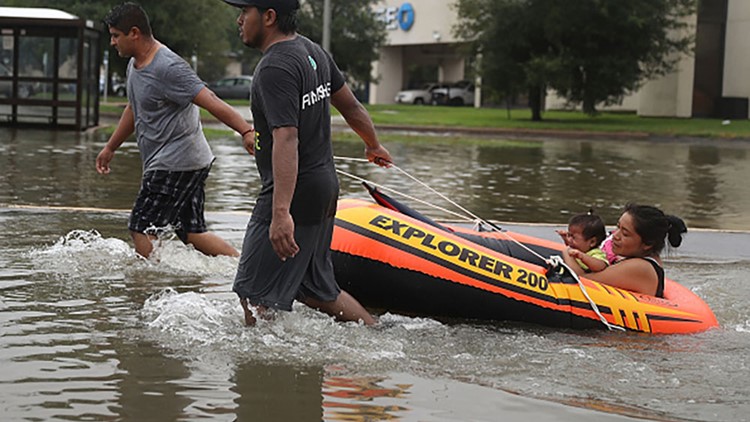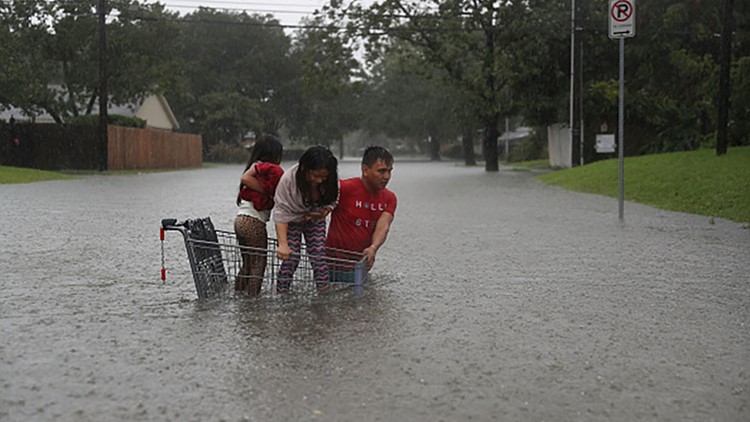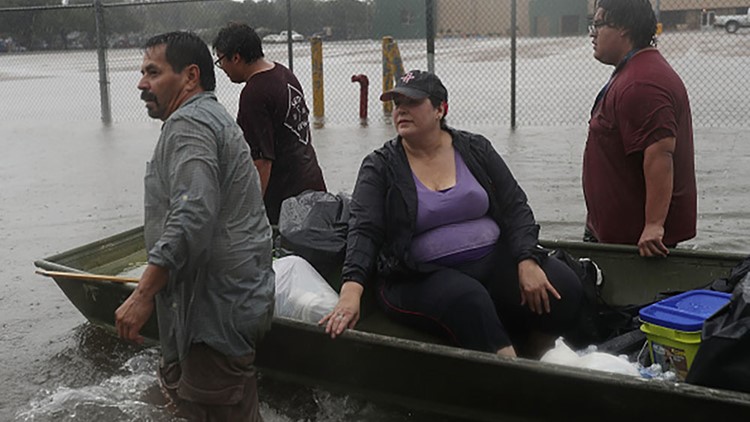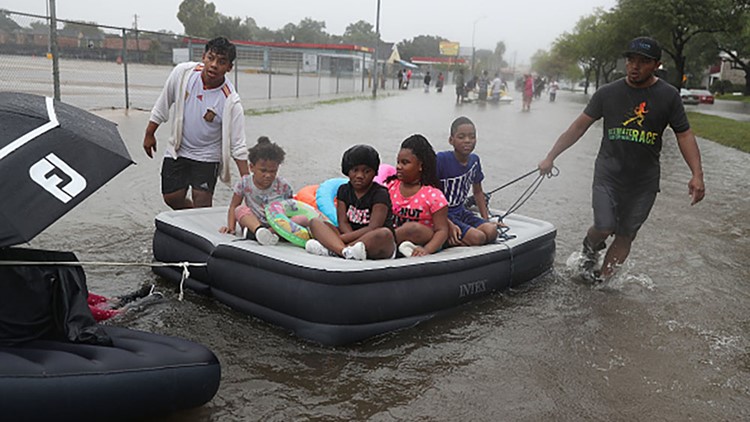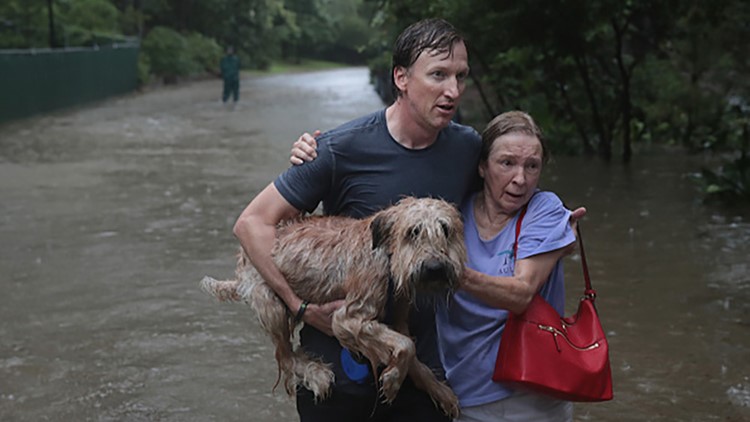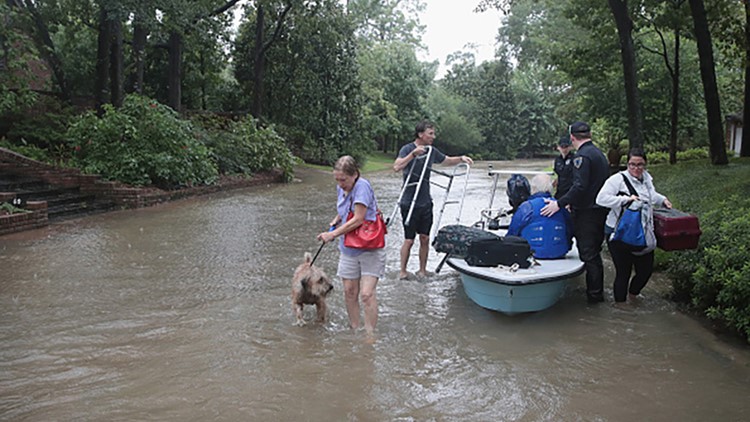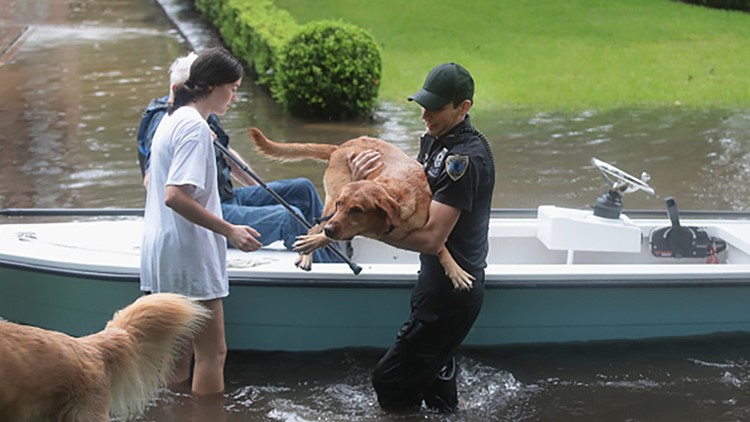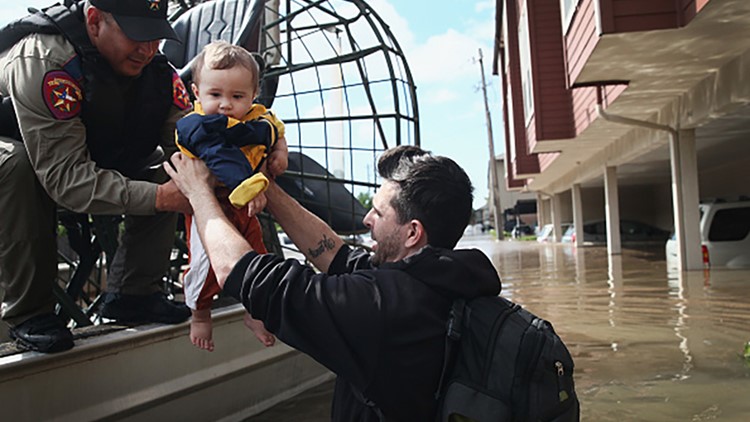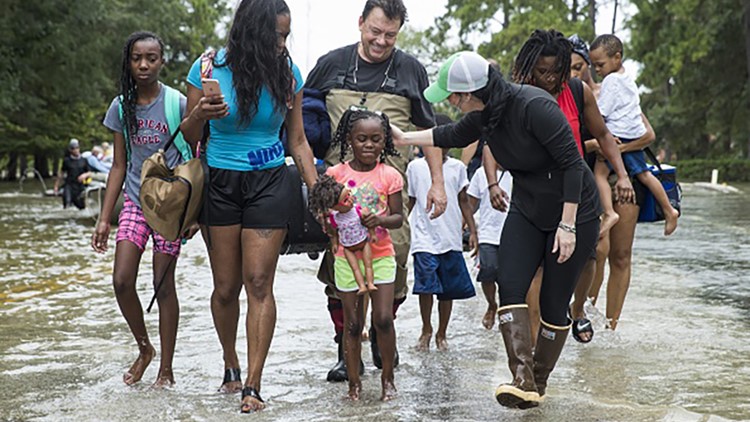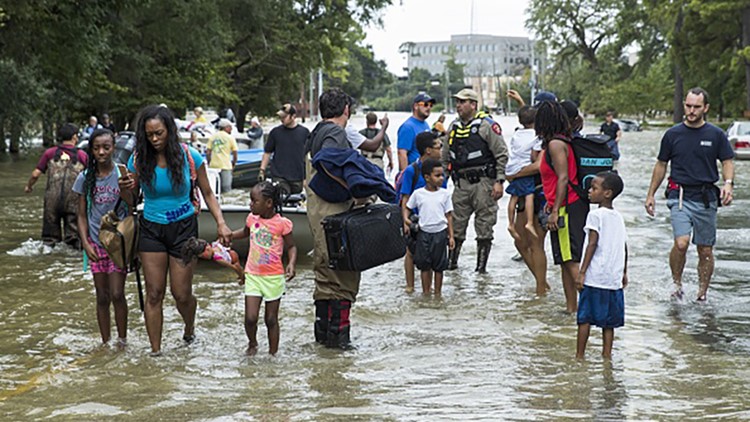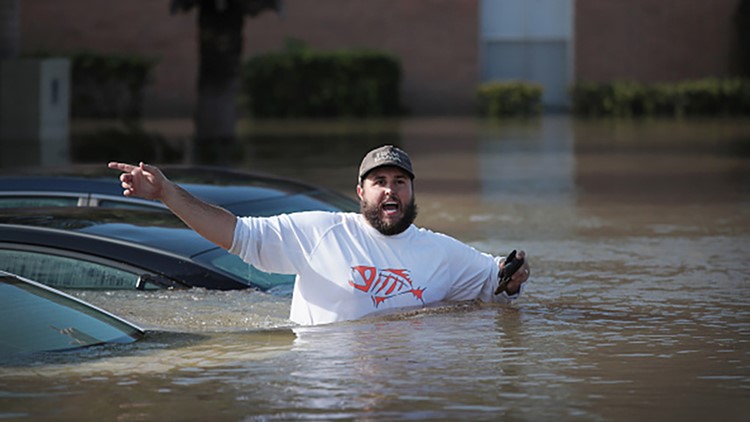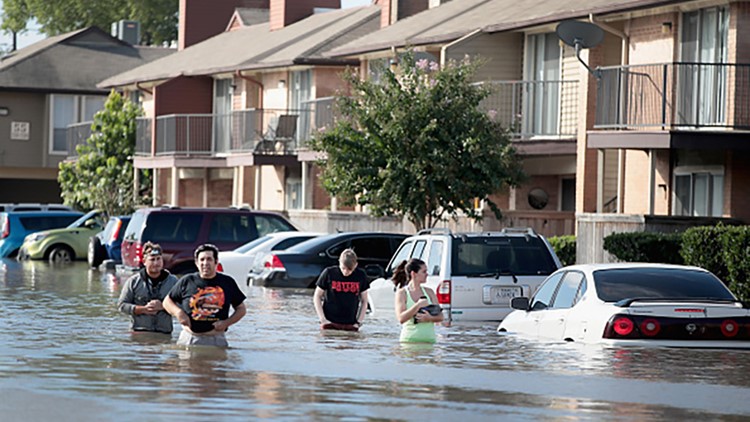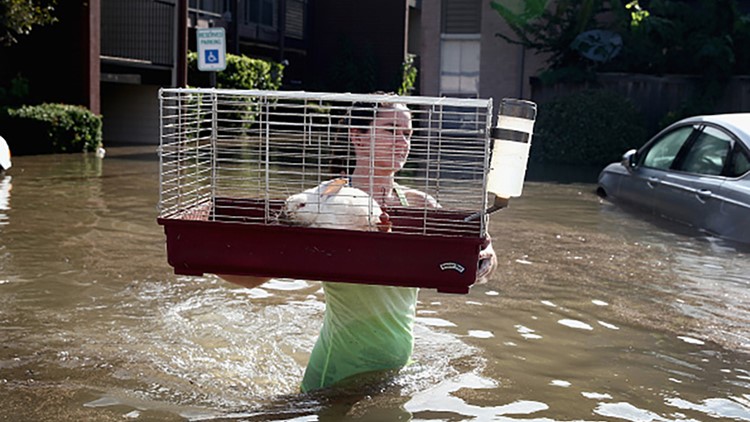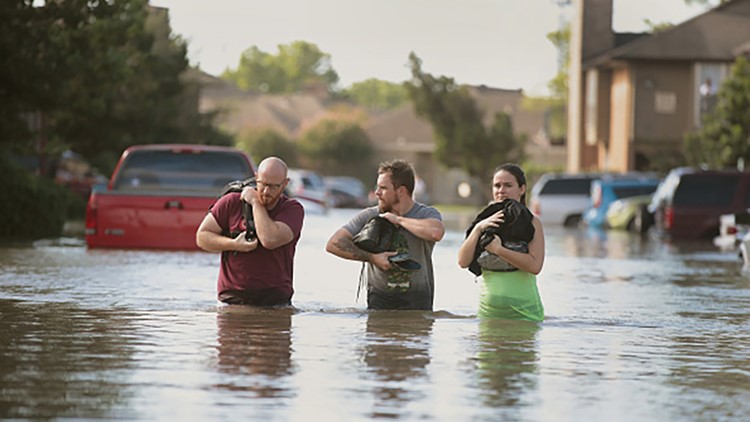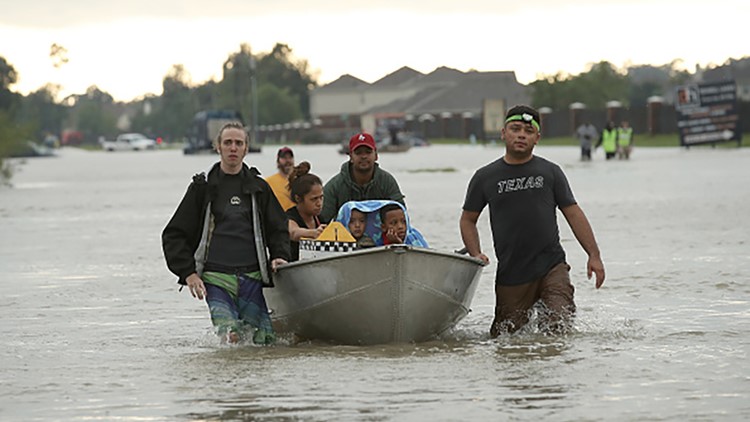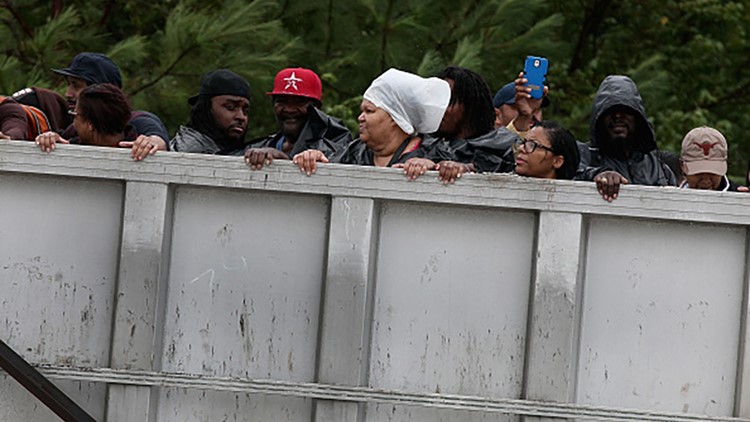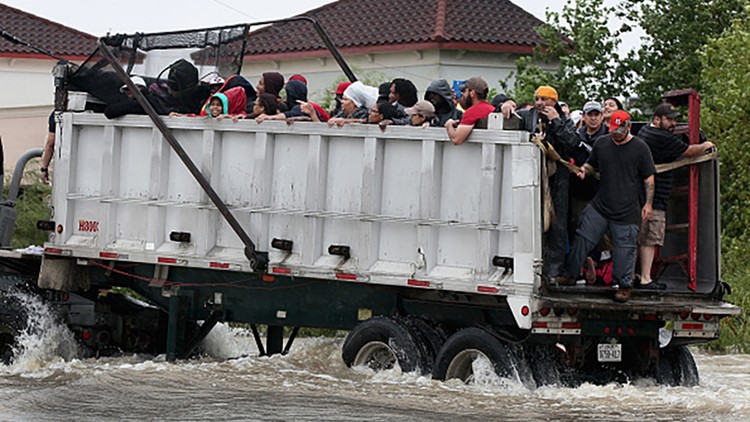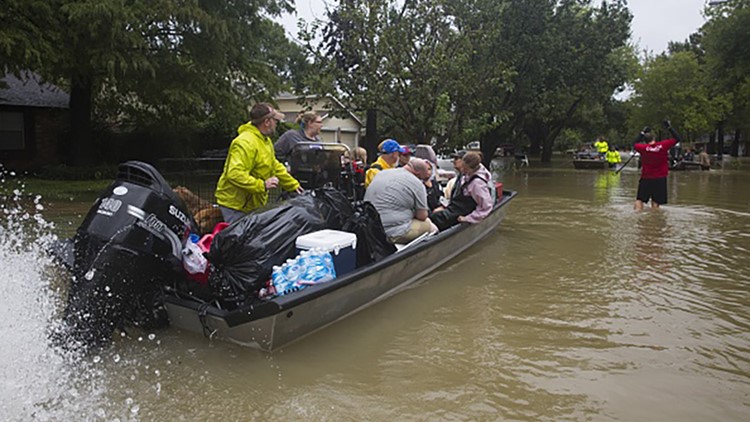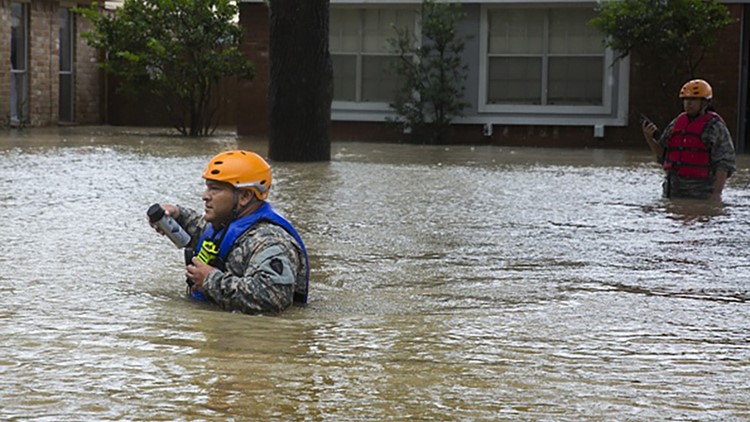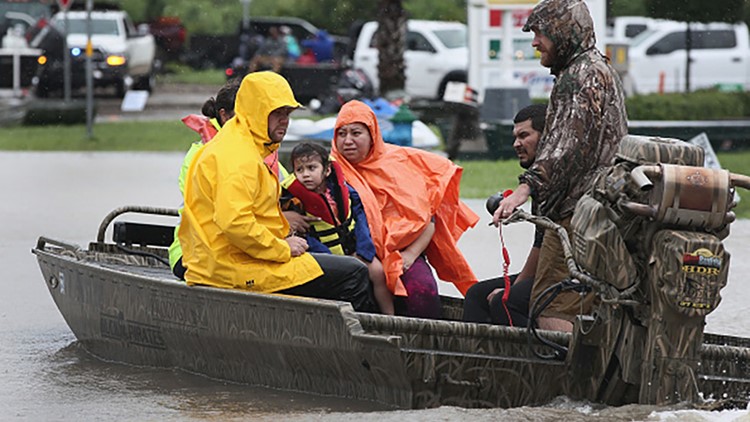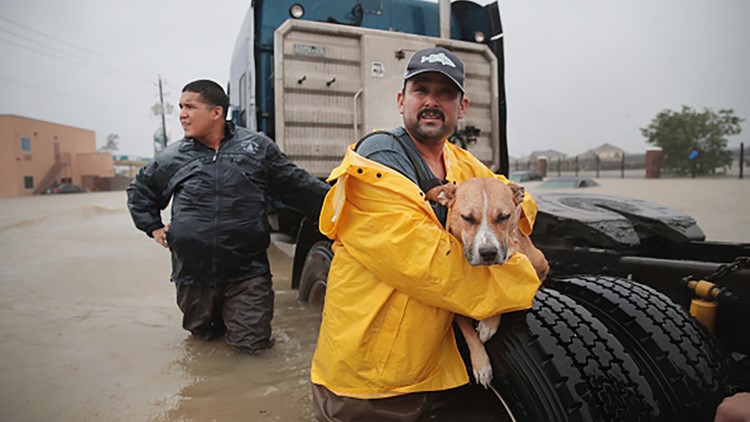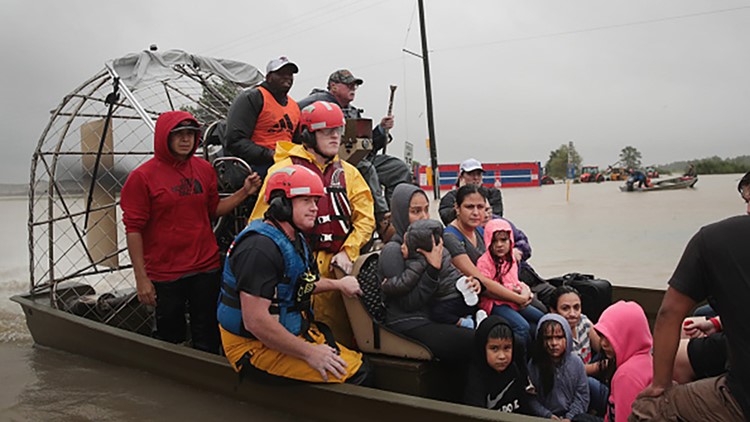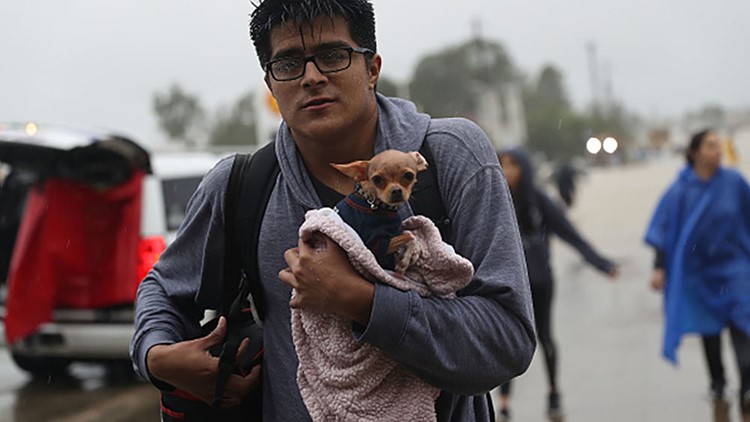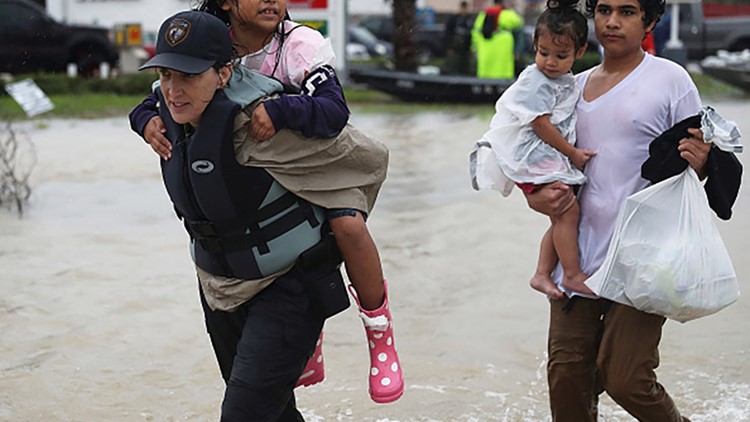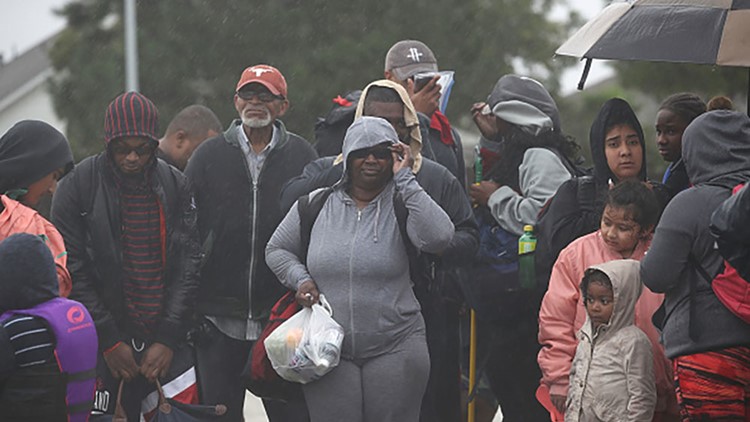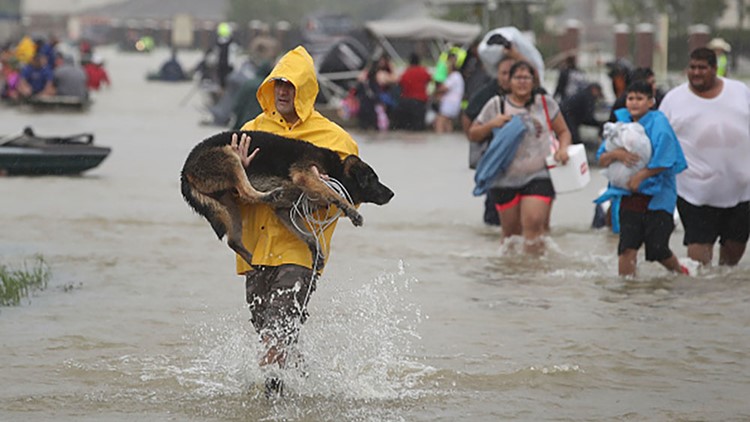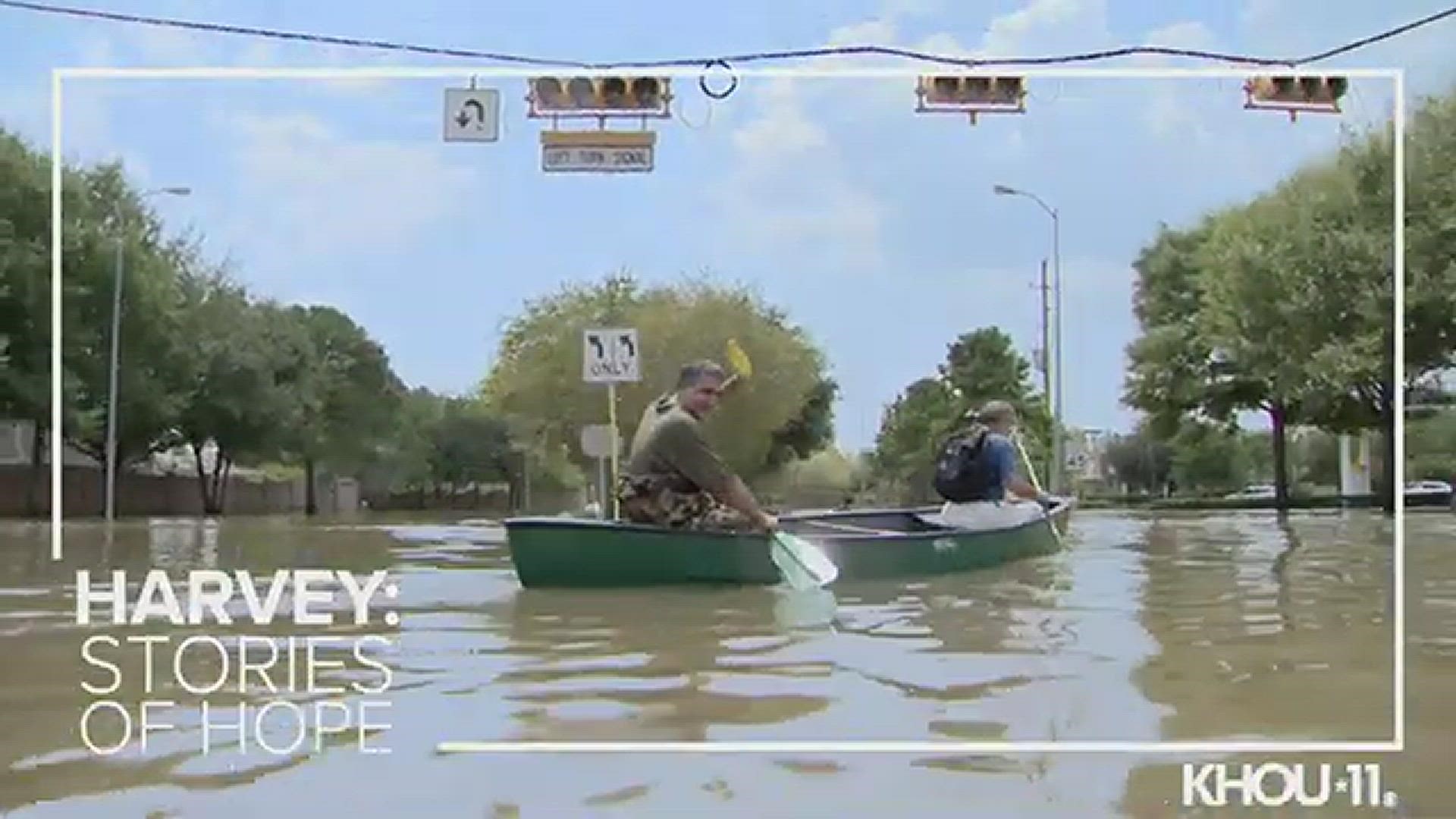One year after Hurricane Harvey slammed the Texas coast, 8 percent of the people impacted by the disaster have not been able to return to their homes, according to a report from two nonprofits that surveyed Texans about how the storm affected their finances, health and living conditions.
Fifteen percent of the hundreds of thousands of homes damaged by the storm are still unlivable. And of the 1,651 people from 24 counties who answered the survey, 30 percent of those impacted by the storm said their lives are still "somewhat" or "very" disrupted by the devastating storm's lingering damage.
Photos: Thousands rescued after Harvey dumps record rainfall
Those survey results, released by The Kaiser Family Foundation and the Episcopal Health Foundation on Thursday, may be the clearest picture of how many people are still struggling to put their lives back together after Harvey. Federal and state officials aren't keeping track of how many people remain displaced.
The Federal Emergency Management Agency, which provides aid in the immediate aftermath of disasters, said it doesn’t tally how many Texans are still without permanent homes “in a meaningful way.” FEMA spokesman Kurt Pickering deferred The Texas Tribune’s questions to the Texas General Land Office, the state entity that federal officials and Republican Gov. Greg Abbotttabbed to oversee both short- and long-term housing recovery programs after Harvey slammed ashore last year.
Meanwhile, GLO spokeswoman Brittany Eck deferred the questions to FEMA. She said her office’s “exposure to those in need of assistance is limited” to the names of people that FEMA shares with the state.
While most survey respondents said their financial situations and quality of life are about the same as they were before Harvey, 23 percent said that Harvey worsened their financial situation and 17 percent said it lowered their quality of life. Twelve percent of respondents said their financial situation is better and 11 percent said their quality of life has improved.
But the results found that people of color, those with lower incomes and people living in certain geographic areas are not recovering as quickly as many Texans.
“This survey shows how much Harvey continues to haunt many across coastal Texas, with significant shares reporting ongoing challenges with their housing, finances and health,” Drew Altman, president and CEO of the Kaiser Family Foundation, said in a prepared statement.
Among black Texans impacted by the storm, 60 percent say they are not getting the help they need. That compares to 40 percent of Hispanic respondents and 33 percent of white respondents.
Half of respondents with lower incomes say they’re not getting the help they need, compared 32 percent of people with higher incomes. The survey classified people into two income groups — those making double the poverty-level income and those making less than that threshold. Twice the poverty level is an income of $24,280 for a single person and $50,200 for a family of four.
Meanwhile, 27 percent of Hispanic respondents affected by Harvey said their previous homes remain unlivable. Twenty percent of black respondents and 11 percent of white respondents said their previous homes cannot be lived in. And 27 percent of Texans earning lower incomes say their previous homes aren’t safe, while only 9 percent of higher earners said the same thing.
“One year later, many of those with the fewest resources are still struggling to bounce back from Harvey’s punch,” said Elena Marks, Episcopal Health Foundation president and CEO.
Flooded highways and dramatic rescues in Houston’s swamped neighborhoods propelled the city into the national spotlight last year, making it the poster child of Harvey’s destruction. But the two nonprofits’ survey results show that Houston’s Harris County has recovered faster than other areas.
The groups found that 19 percent of Harris County residents sustained minor damage to their homes, while 18 percent had major damage or complete destruction. Eight percent of people in the county have not returned to their previous homes.
In the coastal counties that first faced Harvey’s wrath, which includes Aransas, Nueces and San Patricio counties, 34 percent of people said their homes received minor damage while 27 percent said their homes sustained major damage or were completely destroyed. Yet only 7 percent of people in those counties have yet to return home.
But in the Golden Triangle — the area surrounding Beaumont, Port Arthur and Orange — 17 percent of people’s homes saw minor damage, while 38 percent said their homes had major damage or were completely destroyed. And 20 percent of people in that region have not returned to their previous homes, according to the surveys.
“This kind of information is crucial to letting government and other recovery groups know what Texans still need for a long-term comeback,” Marks said.




